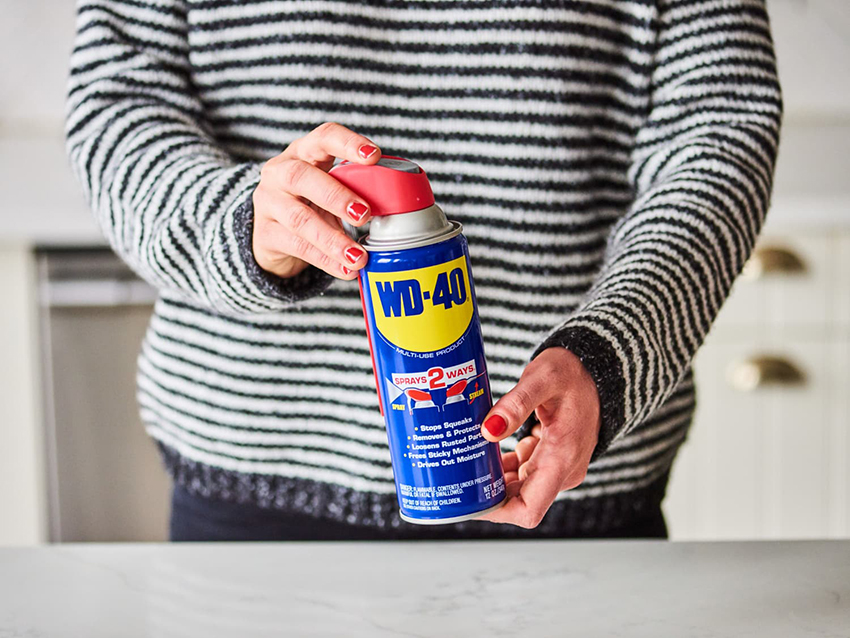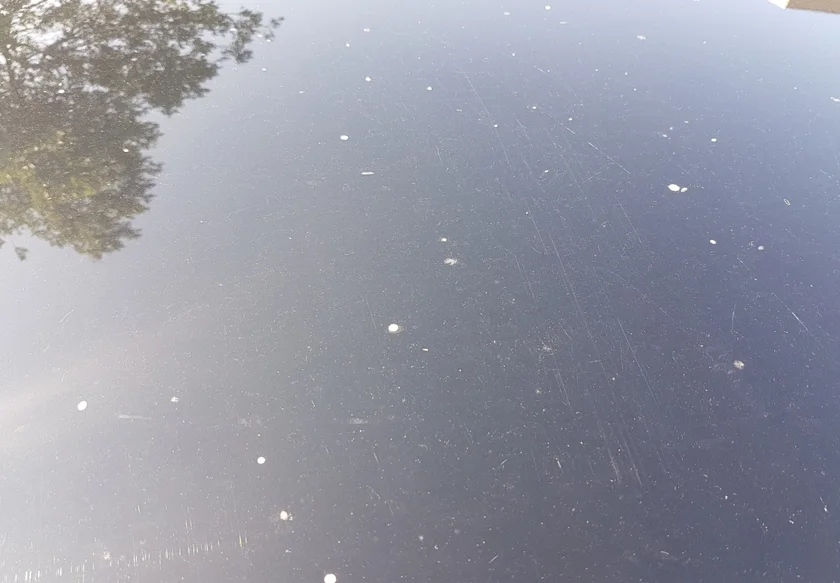To remove sticky residue from your car exterior, mix equal parts vinegar and warm water, apply the solution with a microfiber cloth, and gently scrub the area until clean. Additionally, using a commercial adhesive remover or rubbing alcohol can also effectively remove sticky residue from the car’s surface.
Keeping your car exterior clean and free from sticky residue can be a challenge, especially if you’ve encountered a mishap like tree sap or adhesive from stickers. These unsightly spots not only make your car look unattractive but can also damage the paint job if left unattended.
Fortunately, there are simple and effective methods you can use to remove sticky residue from your car’s exterior. We will explore some easy-to-follow techniques that will help you restore your car’s shine and maintain its pristine appearance. Whether you opt for a home remedy or a commercial adhesive remover, you’ll have your car looking as good as new in no time. So let’s dive in and discover how to remove sticky residue from your car exterior with ease.
Methods For Removing Sticky Residue
When it comes to maintaining the appearance of your car, sticky residue can be a persistent and annoying issue. Whether it’s leftover adhesive from a decal or a spill that has dried on the exterior, it’s essential to remove these sticky substances to prevent damage to the paintwork. Fortunately, there are several effective methods you can use to tackle this problem. In this section, we will explore three popular and practical approaches for removing sticky residue from your car’s exterior: using a gentle cleaning solution, using heat and adhesive remover, and utilizing household items.
Using A Gentle Cleaning Solution
When it comes to removing sticky residue from your car’s exterior, using a gentle cleaning solution can be an effective method. A mild detergent mixed with warm water is often sufficient to break down the adhesive and dissolve the residue. Here’s a step-by-step guide on how to remove sticky residue using a gentle cleaning solution:
- Mix warm water and a small amount of mild dish soap in a bucket.
- Using a clean microfiber cloth or sponge, dip it into the soapy water solution.
- Gently scrub the sticky residue, applying light pressure in a circular motion.
- Rinse the area with clean water to remove any remaining residue and soap.
- Dry the area using a clean, lint-free cloth to prevent water spots.
Using Heat And Adhesive Remover
If the sticky residue on your car’s exterior is proving to be stubborn, using heat and adhesive remover can be an effective solution. The application of heat helps to loosen the adhesive, making it easier to remove. Follow these steps to remove sticky residue using heat and adhesive remover:
- Use a hairdryer or heat gun set on low heat to warm the sticky residue.
- Once the residue starts to soften, gently scrape it off using a plastic scraper or an old credit card.
- Be careful not to apply excessive force or use sharp objects that could damage the paintwork.
- After removing the majority of the residue, apply an adhesive remover to dissolve any remaining traces.
- Wipe the area clean using a microfiber cloth.
Using Household Items
If you prefer using everyday household items, there are several options available to help remove sticky residue from your car’s exterior. Here are a few household items you can use:
| Household Item | Description |
|---|---|
| Peanut Butter | Apply peanut butter to the sticky residue, let it sit for a few minutes, then wipe it off with a clean cloth. |
| Rubbing Alcohol | Moisten a clean cloth with rubbing alcohol and gently wipe the sticky residue until it dissolves. |
| Vinegar | Soak a cloth in vinegar, place it over the sticky residue for a few minutes, and then rub it off gently. |
| WD-40 | Spray WD-40 on the residue, let it sit for a few minutes, then wipe it off with a clean cloth. |
These household items can be easily found in most homes and provide effective solutions for removing sticky residue from your car’s exterior.

Credit: prohousekeepers.com
Step-by-step Guide To Removing Sticky Residue
Looking to remove sticky residue from your car’s exterior? Follow our step-by-step guide for a hassle-free solution. With easy-to-follow instructions, you’ll have your car looking pristine in no time.
Removing sticky residue from your car’s exterior can be a frustrating task, especially if you’re not sure where to start. However, with a step-by-step guide, you can tackle this issue effectively. In this article, we’ll walk you through the process of removing sticky residue, from preparing the surface to rinsing and drying, so you can restore your car’s shine and keep it looking like new.Preparing The Surface
Before you begin removing the sticky residue, it’s essential to prepare the surface properly. This ensures that the cleaning solution can penetrate effectively and provides better results. Here’s how you can prepare the surface:- Choose a shady spot:
- Gather your supplies:
- Remove loose dirt:
Start by parking your car in a shady area. This prevents the cleaning solution from drying up too quickly, allowing it to work effectively on the sticky residue.
Make sure you have all the necessary supplies on hand, including a microfiber cloth, a bucket of warm water, a mild soap or car cleaning solution, and a sponge or soft-bristle brush.
Use the microfiber cloth to remove any loose dirt or debris from the affected area. This step prevents additional scratches or damage to your car’s paint job during the cleaning process.
Applying The Cleaning Solution
Once the surface is prepared, it’s time to apply the cleaning solution to the sticky residue. Follow these steps to ensure effective application:- Mix the cleaning solution:
- Soak the sponge or brush:
- Gently scrub the sticky residue:
- Continue scrubbing:
In a bucket of warm water, add a few drops of mild soap or car cleaning solution. Mix it well until it creates a soapy solution.
Dip the sponge or soft-bristle brush into the soapy solution. Ensure that the sponge or brush is generously soaked to maximize the cleaning ability.
Using the sponge or brush, gently scrub the affected area in circular motions. Apply light pressure to avoid scratching the car’s paintwork.
If necessary, repeat the scrubbing process until the sticky residue starts to loosen. Be patient as some stubborn residue may require multiple attempts.
Removing Sticky Residue
Once the sticky residue has loosened, it’s time to remove it completely. Follow these steps to ensure effective removal:- Use the microfiber cloth:
- Apply more cleaning solution if needed:
Take the microfiber cloth and gently wipe away the loosened residue. Ensure that you’re using a clean section of the cloth for each wipe to avoid spreading the residue.
If you encounter any stubborn residue, apply a small amount of the cleaning solution directly onto the cloth and continue wiping until the residue is gone.
Rinsing And Drying
Finally, after successfully removing the sticky residue, it’s important to rinse and dry the area properly. Follow these steps to ensure a clean and spotless finish:- Rinse with clean water:
- Dry with a clean cloth:
- Inspect the surface:
Use a hose or bucket of clean water to rinse the area thoroughly. This removes any remaining residue or cleaning solution.
Take a clean microfiber cloth and gently pat the area dry. Avoid using excessive force to prevent any potential scratches.
Take a moment to inspect the area and ensure that all sticky residue has been successfully removed. If necessary, repeat the process until you achieve the desired results.
Preventive Measures
Preventing sticky residue on your car’s exterior is the key to maintaining its pristine appearance. By following a few simple preventive measures, you can save yourself the hassle of removing sticky substances and keep your car looking its best. In this section, we will discuss three important preventive measures: regular car wash, waxing the car, and avoiding sticky substances.
Regular Car Wash
Regularly washing your car is essential for keeping it clean and free from sticky residue. A car wash not only removes dirt and grime but also helps prevent the buildup of sticky substances. By cleaning your car on a regular basis, you can remove any residue that may have accumulated, ensuring that your car’s exterior remains smooth and glossy.
When washing your car, make sure to use a mild soap or car-wash solution specially designed for automotive use. Avoid using harsh chemicals or abrasive cleaners, as they can damage the paintwork. Additionally, it is recommended to use a soft sponge or microfiber cloth to gently scrub the surface, paying extra attention to areas that are prone to collecting sticky substances.
Remember to rinse your car thoroughly after washing to remove any soap residue. Leaving soap on the surface can attract dirt and other contaminants, leading to a sticky appearance. Finally, dry your car using a clean, lint-free cloth or chamois to prevent water spots.
Waxing The Car
Waxing your car provides an additional layer of protection against sticky residue and helps maintain its shine. The wax acts as a barrier, preventing substances from adhering to the paintwork and making them easier to remove. Regular waxing not only keeps your car looking glossy but also adds a protective coating that repels dirt and sticky substances.
Before applying wax, make sure to wash and dry your car thoroughly to remove any dirt or residue. Choose a high-quality car wax that is specifically formulated for the type of paint on your car. Apply the wax using a soft cloth or applicator pad, following the manufacturer’s instructions. Allow the wax to dry completely before buffing it off with a clean cloth to reveal a beautiful, protected finish.
Avoiding Sticky Substances
Preventing sticky residue on your car’s exterior starts with being mindful of the substances you come into contact with. Avoid parking your car under trees that produce sticky sap, as it can be difficult to remove and may cause damage to the paintwork. If you do encounter sap or other sticky substances on your car, it is important to remove them promptly to prevent staining or etching of the paint.
Be cautious when parking near construction sites, as tar, asphalt, or other sticky materials may be present. If you notice any sticky residue on your car, avoid rubbing or scratching it off, as this can cause further damage. Instead, use a specialized tar remover or a gentle solvent recommended for automotive use. Apply the product to a clean cloth and carefully wipe the affected area, ensuring not to spread the residue or rub too vigorously.
By following these preventive measures, you can keep your car’s exterior free from sticky residue and maintain its showroom shine for years to come. Remember to regularly wash and wax your car, as well as avoid parking near sticky substances, to ensure the longevity and beauty of your vehicle.

Credit: www.carwash.com

Credit: www.fortador-usa.com
Conclusion
To wrap it up, these simple yet effective methods can help you get rid of sticky residue from your car’s exterior. By using everyday household items like vinegar, baking soda, or WD-40, you can restore the shine and cleanliness of your vehicle effortlessly.
Remember to always test these methods in a small inconspicuous area before applying them to the entire surface. With a little bit of patience and these handy tips, your car will be looking brand new in no time. So go ahead, tackle that sticky mess and give your car the treatment it deserves.

